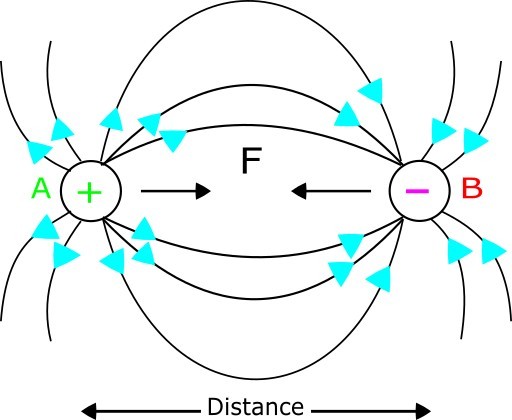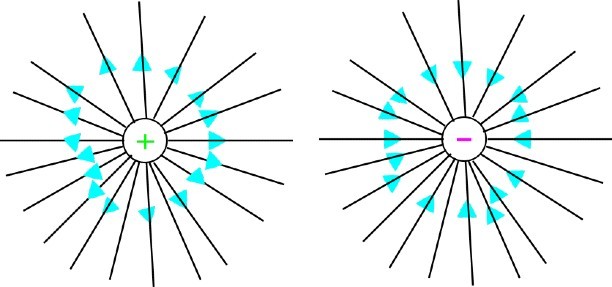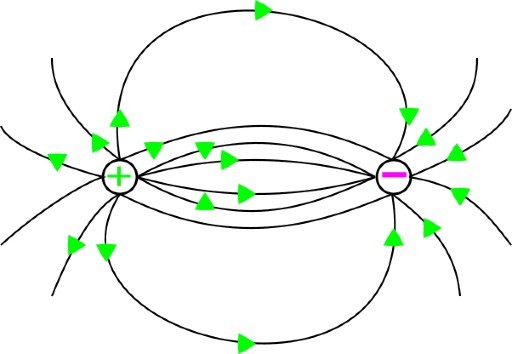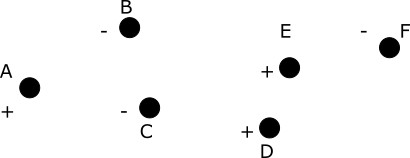what is Electric Charge? - its attractive forces
Table of Contents
Togglethe electrons in the outer orbit of any atom can be easily removed by some external force.when the electron is ejected from the orbit by outer force,then lacks electrons in the atom.but when the electron is excess from the orbit by outer force,then excess electron in the atom.
because we know that an atom has the same charge of electron and proton due to which the atom is nutral.an atom is positively charged when there is a shortage of electrons in the atom like when an atom has an excess of electrons.such an atom negatively charged.
Electric Charge
there are two types of charges in nature,positive charge and negative charge.there are about equal numbers of negatively charged particles and positively charged particles and so net charge is zero,the charge is said to be balanced.
any object in nature is in neutral state.if some one walks on a carpet in an area with low humidity,then there is a slight imbalance of charge in that person’s body.
and the feeling of this charge is not known until it comes in contact with another person or the earth,as soon as those person comes in contact with someone,it generates as slight shock and spark.in an static electricity deals with phenomena of attractions or repulsions of electric charges.
Electrostatic
the branch of engineering in which electric charge is studies at rest is called electrostatics.in electrostatics,when the charge bodies are separated by some insulating medium.electrostatics in the study of static electricity.
Coulomb's Law or Electric Charge Law
during the 18th century,French Scientist Charles A. Coulomb studied the subject of electric charge.he discovered two rules of electric charge.this law is also called electrostatics or coulomb’s law or charge law.
- Like charges repel each other and unlike charges attract each other


we can understand the rule with simple examples.the ebonite rod becomes negatively charged when rubbed against fur cloth.again,if glass rod is rubbed againsts fur cloth,it gets positively charged.if they are brought near each other,they try to attract each other.
when two ebonite rods after rubbing against fur cloth,brought nearby,try to repel each other.an electrostatic unit of charge is that charge which,when placed one centimeter away from a like charge in a vaccum,repels it with a force is called one dyne.
unit of static electric charge is the coulomb which is equal to 3\times 10^{9} electrostatics units.
- Coulomb's Inverse Square law.
according to this rule,the mechanical force between two small charge bodies,whether it is attraction or repulsion.
- Directly Proportional to the Product of the Charged between the two bodies
- Inversely Proportional to the Square of the distance between the bodies.
- Depends upon the nature of the medium surrounding the bodies.
in figure two point charges,separated by distance d meter.the charges are Q_{1} and Q_{2} coulombs and K is the content of proportionality.according to coulomb’s law,force between the charges can be expressed as
the constant of proportionally,K depends on the surrounding medium and is given by
where \varepsilon = absolute permittivity of medium = \varepsilon _{0}\varepsilon _{r}
\varepsilon _{0} =permittivity of free space
and \varepsilon _{r} =Relative Permittivity of the medium
\varepsilon _{0} =\dfrac{1}{36\pi \times 10^{9}}
8.854\times 10^{-12} farad per meter.for air \varepsilon _{r} = 1
the concept of permittivity is discussed later in the chapter.if Q_{1}=Q_{2}=1c and d=1m.
then F=\dfrac{1}{4\pi \times 8\cdot 854\times 10^{-12}}=9\times 9^{9}N.
What is Electric Lines of Force
an electric field is generated around any charge and we display it by imaging and it is called the lines of force.the lines of force of positive electric charge and negative charge are shown as in the figure.

such lines of force originate from the positive charge and terminate on the negative charge.when these two types of charges are brought together,they exert the force of attraction on each other.
Some Important Properties of lines of force.
- the lines of force alaways originate from a positive charge and terminate at negative charge.
- lines originate or terminate from a charged particle never cross each other
- the lines traveling in the same direction repel each other,while traveling in the opposite directions attract one another.
- it alaways behave like stratched band
- they are alaways parallel.
- they alaways pass in insulating medium.
Electric Field
if another charge is established inside the field of any charge,then there is a stress and a force between them,whether both there charges are of equal or unequal nature.

the area around which force or stress is applied in charge body is called electric field.such electric field produced due to stationary electric charge it does not very with time.it is time invariant and also called static electric field.
electric flux represented by \psi. the unit of electric flux is also coulomb C
Superposition Principle
according to coulomb’s law,the force between two charges is either attraction or repulsion.but if many charges are present simultaneously then in this situation the superposition principle is used to find the force on the particular charge.
when multiple charges are present,the total force on the given charge is equal to the vector the sum of forces.due to other charges remaining on a given charge.
The use of Superposition Principle to find
- net electric force due to a number of charges
- net electric flux due to a number of charges
- net electric field due to a number of charges
- net electric potential due to a number of charges
- net electric potential energy due to a number of charges
Important Role of Electrostatics Principle
- these principle used in cathode ray tube for focusing and deflecting a beam.
- these principle used in computer peripheral devices like keyboards,touch pads and liquid crystal displays etc.
- these principle used in X-ray machine and medical instruments used for electrocardiograms,scanning etc.
- these principle used in spray painting,electrodeposition etc.
- these principle used in the agricultural activities like sorting seeds,spraying to plants etc.
- these principle used in resistors,capacitors and transistor functioning.
Type of Electric Charges
the smallest type of negative charge is made by negative electrons and mesotron.its value is -1\cdot 60\times 10^{-19} coulomb.the smallest type of positive charge is made by positron and its value is +1\cdot 60\times 10^{-19} coulomb.
in any current flowing conductor,a positive charge appearing when there is a dearth of electrons.the tranfer of electric charge,positive and negative both type of charge take part for conduction.
a point charge is the electric charge which is spreaded or distribute along a line,on a surface or in a volume.therefore there are four type of electric charge.
1. Point Charge
when dimensions of a surface carrying charge are very very small compared to region surrounding it then the surface can be act as a point.therefore this charge is called point charge.the point charge is a point but it has not the dimensions.point charge like positive or negative

2. Line Charge
when the static charge may be spreaded all along a line,is called line charge.it may be finite or infinite.

3. Surface Charge
when the static charge is distributed uniformly over two dimensional surface it is called surface charge.in fugure shown surface charge.

4. Volume Charge
when charge distributed uniformly in a volume,then this charge is called volume charge.in figure shown volume charge.

